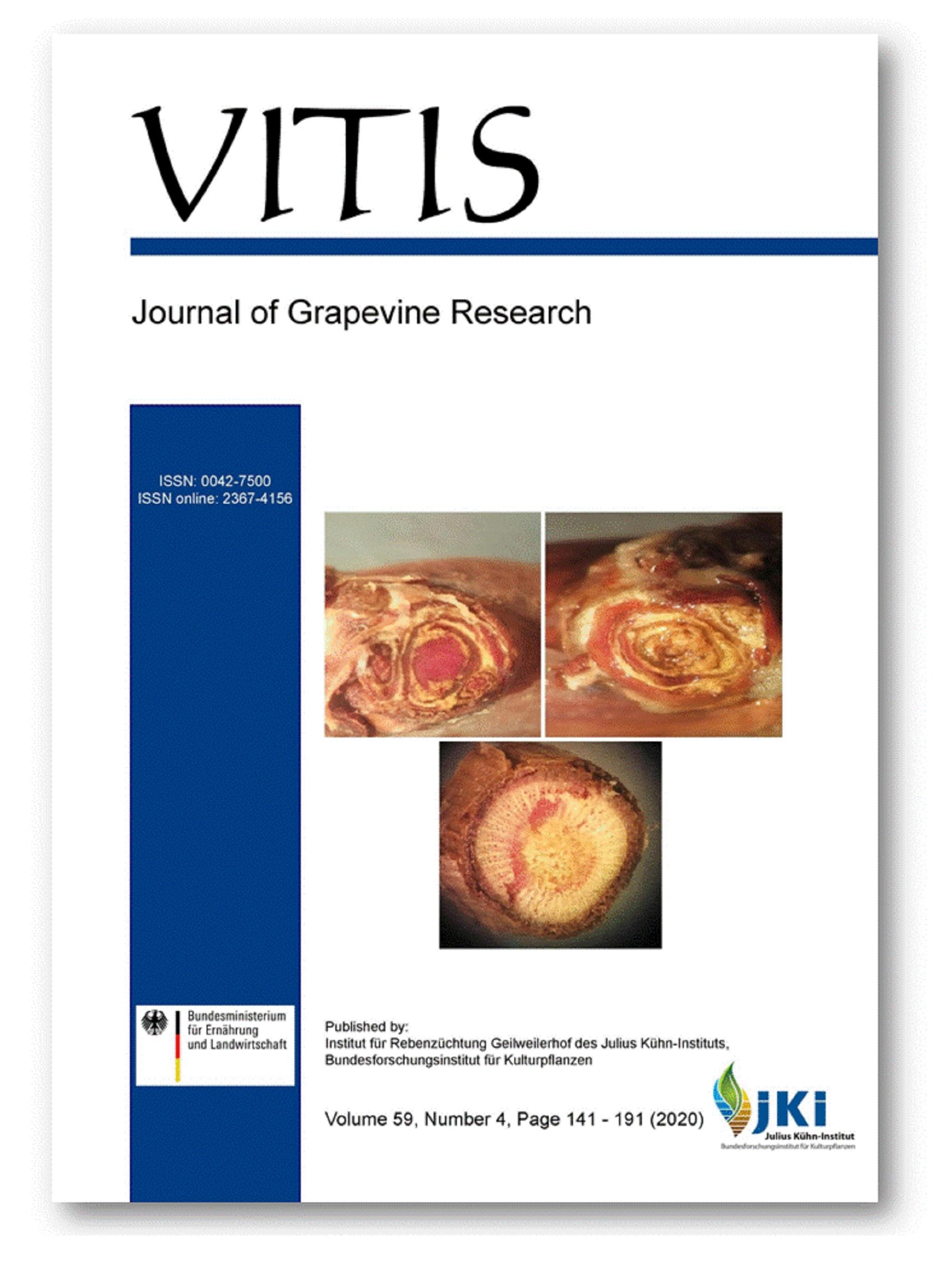Diverse and strain-specific metabolites patterns induced by fungal endophytes in grape cells of different varieties
DOI:
https://doi.org/10.5073/vitis.2020.59.155-162Keywords:
endophytic fungi; grape cells; co-cultivation; secondary metabolites; high pressure liquid chromatography (HPLC)Abstract
The potential for endophytes to initiate changes in host secondary metabolism has been well documented. However, the mechanisms underlying endophyte-plant metabolic interactions are still poorly understood. Here, we analysed the effects of fungal endophytes on the metabolite profiles of grape cells from two cultivars: 'Cabernet Sauvignon' (CS) and 'Rose honey' (RH). Our results clearly showed that co-culture with endophytic fungi greatly modified the metabolic profiles in grape cells of both varieties. Treatments with endophytic fungal strains caused the numbers of detected metabolites to vary from 10 to 19 in CS cells and from 8 to 14 in RH cells. In addition, 5 metabolites were detected in all CS cell samples, while 4 metabolites were detected in all RH cell samples. Some endophytic fungal strains could even introduce novel metabolites into the co-cultured grape cells. The metabolic profiles of grape leaves shaped by endophytic fungi exhibited host selectivity and fungal strain specificity. In this assay, the fungal strains RH32 (Alternaria sp.) and MDR36 (Colletotrichum sp.) triggered an increased response of the detected metabolites, including the greatest increase in the metabolite contents in grape cells of both cultivars. No obvious effects in terms of metabolite numbers and contents in grape cells when co-cultured with fungal strains RH7 (Epicoccum sp.) and RH48 (Colletotrichum sp.) were observed. The results of this experiment suggest that endophytic fungi could be used to control the metabolic profiles of grapes and thus increase grape quality.
Downloads
Additional Files
Published
Issue
Section
License
The content of VITIS is published under a Creative Commons Attribution 4.0 license. Any user is free to share and adapt (remix, transform, build upon) the content as long as the original publication is attributed (authors, title, year, journal, issue, pages) and any changes to the original are clearly labeled. We do not prohibit or charge a fee for reuse of published content. The use of general descriptive names, trade names, trademarks, and so forth in any publication herein, even if not specifically indicated, does not imply that these names are not protected by the relevant laws and regulations. The submitting author agrees to these terms on behalf of all co-authors when submitting a manuscript. Please be aware that this license cannot be revoked. All authors retain the copyright on their work and are able to enter into separate, additional contractual arrangements.



